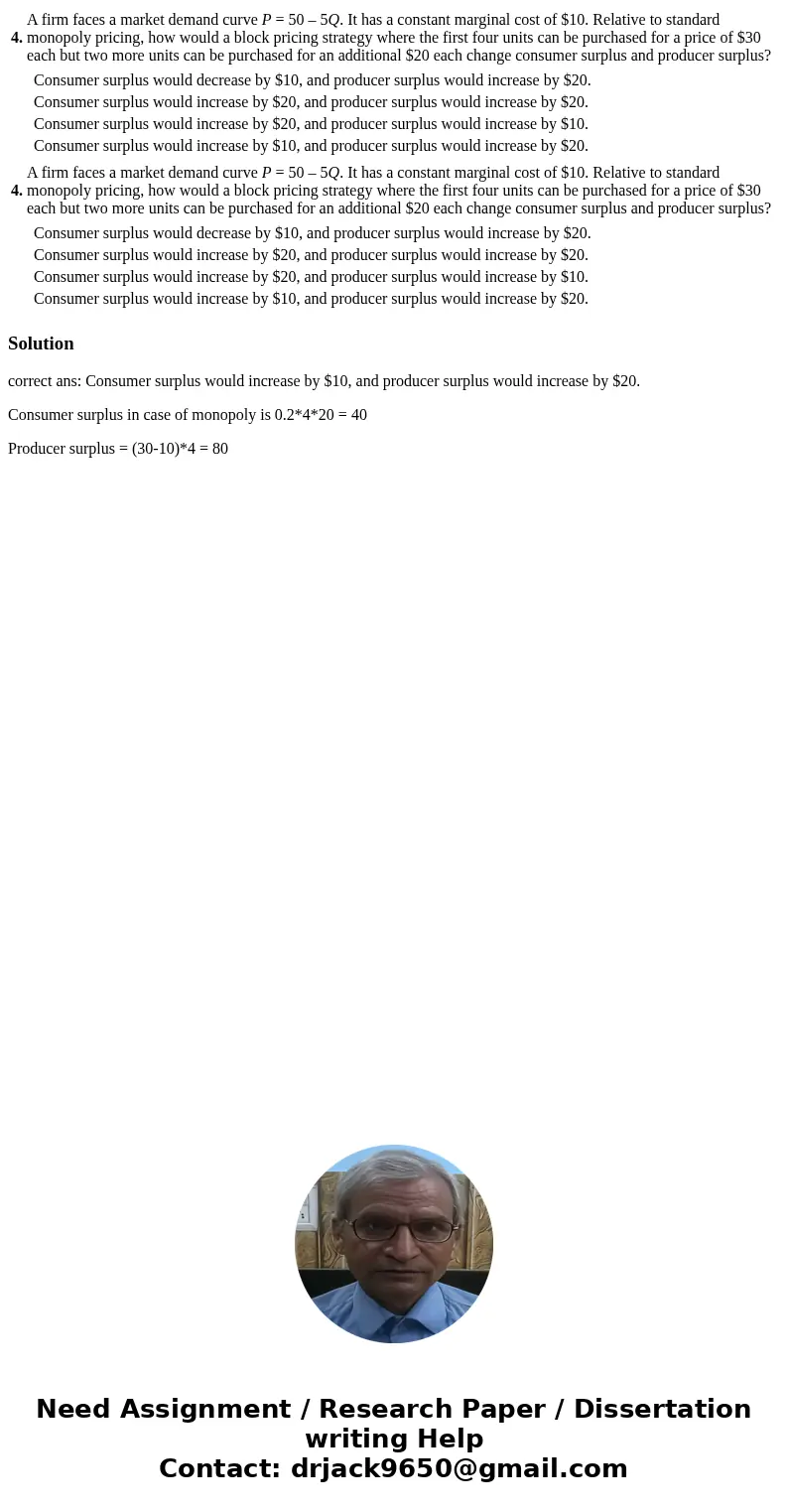| 4. | A firm faces a market demand curve P = 50 – 5Q. It has a constant marginal cost of $10. Relative to standard monopoly pricing, how would a block pricing strategy where the first four units can be purchased for a price of $30 each but two more units can be purchased for an additional $20 each change consumer surplus and producer surplus? |
| | Consumer surplus would decrease by $10, and producer surplus would increase by $20. | | Consumer surplus would increase by $20, and producer surplus would increase by $20. | | Consumer surplus would increase by $20, and producer surplus would increase by $10. | | Consumer surplus would increase by $10, and producer surplus would increase by $20. | |
| 4. | A firm faces a market demand curve P = 50 – 5Q. It has a constant marginal cost of $10. Relative to standard monopoly pricing, how would a block pricing strategy where the first four units can be purchased for a price of $30 each but two more units can be purchased for an additional $20 each change consumer surplus and producer surplus? |
| | Consumer surplus would decrease by $10, and producer surplus would increase by $20. | | Consumer surplus would increase by $20, and producer surplus would increase by $20. | | Consumer surplus would increase by $20, and producer surplus would increase by $10. | | Consumer surplus would increase by $10, and producer surplus would increase by $20. | |
correct ans: Consumer surplus would increase by $10, and producer surplus would increase by $20.
Consumer surplus in case of monopoly is 0.2*4*20 = 40
Producer surplus = (30-10)*4 = 80

 Homework Sourse
Homework Sourse